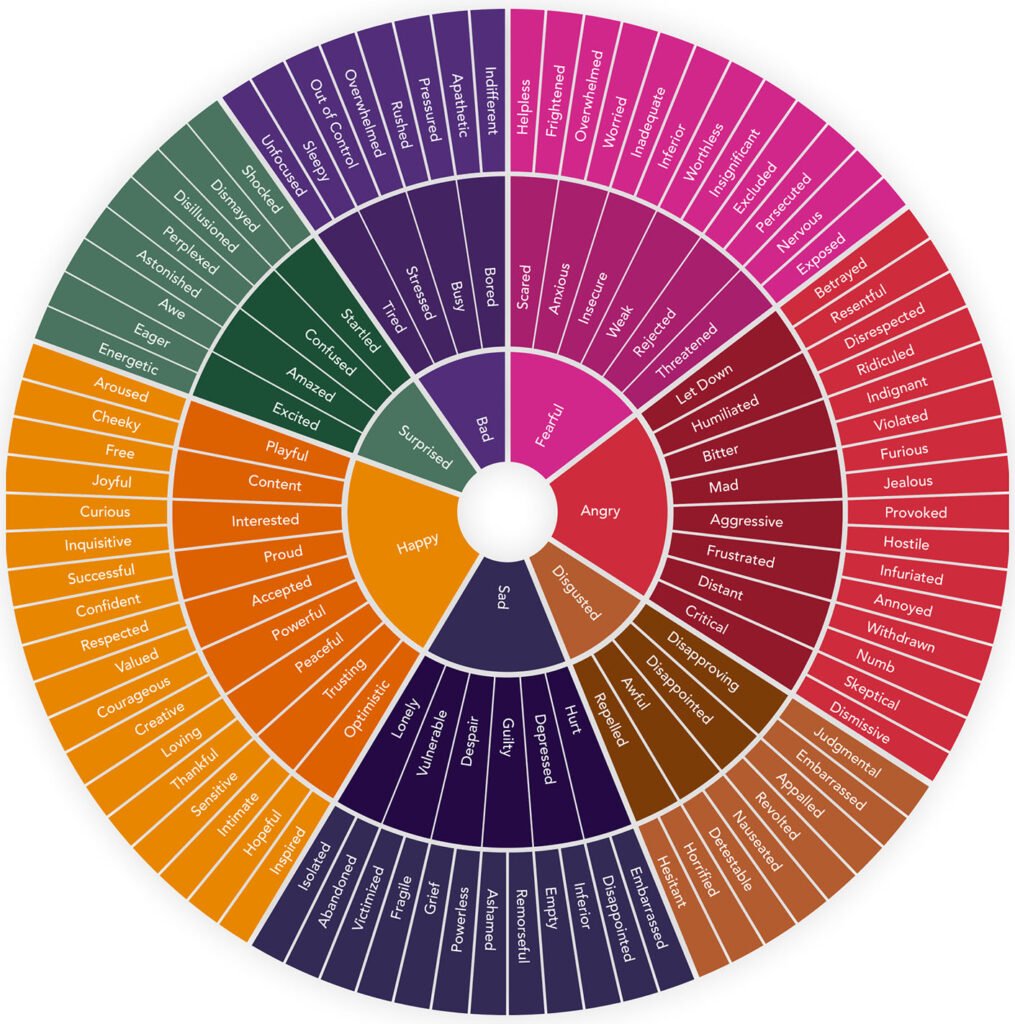If you ever go to a therapist, they will ask what you want. Most people say that they want to get rid of their emotions. They have some painful and unpleasant emotions that they want to get rid of and are missing out on some calm ones that they would like to feel again. They feel the mercy of the painful emotions and want them gone. The best way to deal with unpleasant emotions is to change the relationship with them. Welcome them and observe what message they are conveying to you.
Your brain uses emotions to try to make sense of what is happening in your body and in your environment. Your brain receives information from your physical senses about the outside world and from your bodily functions, like your heart rate, lungs, hormones, and immune function. It then uses the memory of these sensations that occurred in the past to make some sense of them now.
If we could just choose how we want to feel that day when we get up in the morning, wouldn’t it be fantastic? Enter love, excitement, and joy, please! Unfortunately, it is not so simple. The opposite of this idea just pops up with no trigger, and we have no control over what happens and when it happens. While we cannot trigger all the emotions, we have much more influence over our emotional state than we were ever taught to believe.
What not to do with emotions?
1. Push them away:
Dealing with emotions is much the same as standing in the waves of an ocean. When we try to stop feelings in their tracks, we easily get knocked off our feet and find ourselves in trouble, struggling to catch a breath and work out which way is up. When we allow the emotion to wash over us, it will rise up and fall down, taking its natural course.
2. Believe they are facts:
Emotions are real and valid, but they are not facts. They are a guess. A perspective that we try on for size. An emotion is the brain’s attempt to make sense of the world so that you can meet your needs and survive. Given that what you feel is not a factual statement, neither are thoughts.
If we know that thoughts and feelings are not facts, but they are causing us distress, it makes sense to check it out and see whether it is a mirror of reality or if a different approach would be more beneficial. We let our present feelings and thoughts dictate our future thoughts and behaviors when we treat them as realities. Then, instead of making wise decisions, life turns into a sequence of emotional responses. When we are curious, we may examine our errors and draw lessons from them, even if they would otherwise be too painful to admit.
What to do with emotions?
1. Seeing the emotions for what they are:
The secret to processing emotions in a healthy way is to recognize them for what they are. Your feelings are not you, and you are not your feelings. An emotional experience is one that passes through you. Though not always the complete tale, each emotion can provide you with information. when we give ourselves permission to experience emotions without suppressing or denying them. We can approach it with interest and gain knowledge. Finding out what we need and then using that knowledge to fulfill those wants makes the discovery much more important.
2. Increase your emotional vocabulary:

When you feel something, give it a name. Learn the names for lots of emotions. We don’t only feel happy, sad, fearful, or angry. We also feel vulnerable, ashamed, bitter, grateful, inadequate, and excited.
Notice what you feel in your body and label it. It is common for people to recognize physical sensations but have no idea what that emotion is—perhaps the legacy of past teachings that we don’t talk about emotions. You may better control your emotions and select the most constructive reactions in social settings by expanding your emotional language, which allows you to discriminate between various emotions with precision.
3. Self soothing:
When we are overwhelmed, the best strategy is to step back and be mindful of that emotion as much as possible, see it as a temporary experience, and turn down the dial on our threat response by soothing our way through it.
Here are a few self-soothing ideas:
- A warm drink
- A chat with trusted friend or Loved one
- Physical movement
- Calming music
- Slow breathing techniques
- Meditation
It’s easy to claim that intense emotions will rise, peak, and fall, but the actuality of that experience can be agonizing, and it can cause strong desires to engage in risky or hazardous behaviors in an attempt to hasten the disappearance of those feelings.
By practicing mindfulness, we can make use of the awareness tool. Switching off the autopilot and building awareness of thoughts, emotions, urges, and action adds in an amber light before the green light flashes and we act on an urge or emotion. So we give ourselves more chance to make different choices based on our values than simply responding to emotion.
Many of us fear emotions—that is, until we begin allowing ourselves to experience them and understand that they all rise and fall like waves. Pausing between emotion and action is the same process of stepping back, even just for a moment, to check in with your thoughts and actions to see if they will be in line with the person you want to be. The ability to check in on the bigger picture, even for the smallest of moments, can have a powerful impact on the way we live life.
“Emotions can get in the way or get you on the way”
Mavis Mazhura